The Kimberly-Clark “Professional” paper towel dispenser—product name “ICON Rolled Towel Dispenser”—is a thing of functional beauty.
Rare in the paper-towel dispensing machine world, it just works.
There’s no need to frantically wave hands in just the right spot, no need to crank an emergency backup crank, no need to pull out paper towel with wet hands (which always causes the towel to disintegrate). You just rip off a piece of paper towel and a new one rolls out to replace it:
In Charlottetown I’ve seen them at Papa Joe’s and Tekila; weird to say, but I’m more inclined to eat at places that have them.
Our printshop has ended up, for reasons neither Lisa nor I can remember, with an uncommon amount of yellow ink.
Some of this yellow in is Akua Diarylide Yellow, which is a rich, lovely yellow that cries out to be used.
I took advantage of this yellow-glut yesterday, carving a lino block of an abstract sun into Japanese vinyl, and printing 50 copies to become part of a larger date book project I’m working on:
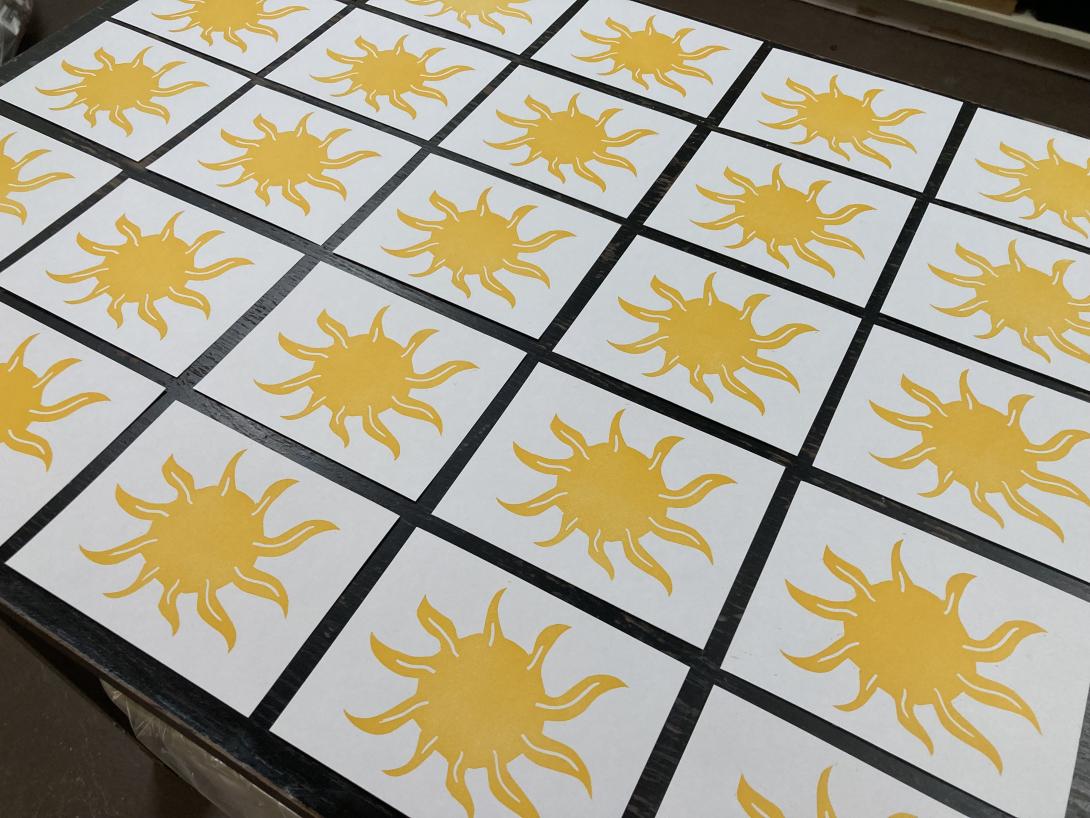
I’ve just finished reading the post reclaiming our emotional sovereignty: repairing the cultural poverty that currently meets disorganised states, by Jason Field.
It is not a light read; it’s a dense 20,472 words masterwork that, despite the foreign terrain for me, prompted more ah-ha moments than anything I’ve read in recent memory.
If I had to select a single paragraph that explains why, it’s this one:
In this renewed ability to hold ourselves, the logical next step comes to put down some of the bags that we have picked up along the way. This can be scary on the first presentation. Knowing how heavy they have been in the past, we must prevent ourselves from projecting one data point into the future indefinitely.
Oftentimes, we think we can pretend something hasn’t happened, I’ve tried that for decades, but the body knows, and our day is not ours (lost sovereignty) because of it. Until we face what was previously too much, we will have great difficulties calling ourselves sovereign over our experience, and our body is here to help us through it too.
So much of my own work in recent years has me return to the statement “I’m not the kind of person who…,” and surely that’s exactly what “projecting one data point into the future indefinitely” is all about.
I remember a visit to a psychologist a decade ago in front of whom I, genuinely, honestly, asked “I’m wondering if it’s possible that I’m feeling things that I’m not aware of.”
Looking back at that now, I realize how naive I was, how almost everything about me was working hard to “pretend something hasn’t happened,” and how, in the years before and since, my body has been trying to tell me this.
Later, Field writes:
We can’t (and shouldn’t) pretend disempowering events never happened.
But we can commit to re-building ourselves and, in doing so, become the agent of our own rescue.
His post is a compelling treatise on how to start doing that.
It’s not an easy read. It took me three days. But it was a worthwhile effort.
Ten years ago, at pei.consuming.ca, I released a web app that displayed the current Prince Edward Island electricity load, and the proportion of that load being met by wind energy generation.
Ten years later, the app is still there, recently updated to include generation from local solar and diesel plants, and energy imported by submarine cable.
What once looked like this:
Now looks like this:
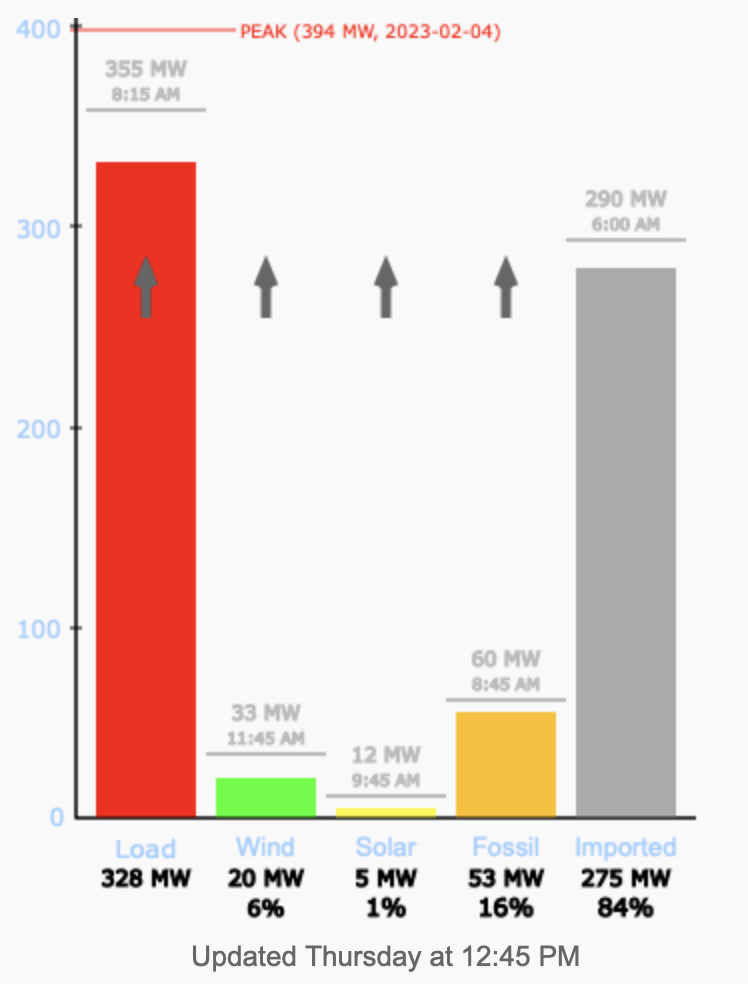
The app pulls data from the Province of PEI, and from the New Brunswick System Operator, and is updated every 15 minutes.
I was proud to play a small role in this week’s episode of the CBC Radio This is PEI podcast.
I am, it seems, the canonical source of the audio and video of the Peter Pan Burger Basket $1.99 television commercial directed by my friend Dave Moses, and featuring a cast of Charlottetown legends.
The producers reached out to me when they couldn’t find it elsewhere, and I found a copy squirrelled away in my archives.
It’s a great podcast episode, and has me wanting a Peter Pan Burger Basket something fierce.
Remember that cold I alluded to back in early January, the one I claimed had “broken”?
Well, 24 days later, illness holds onto me with its steely claws. Sore throat. Cough. Congestion. An evolving variant of what hit me earlier.
The earliest I could get an appointment with the nurse practitioner or doctor in my “medical home” was February 24, and I couldn’t wait that long: I’m not sleeping, I’m tired, and having a constant cough is debilitating.
So I decided to chance making an online appointment at the Boardwalk Clinic with SkipTheWaitingRoom.com, something I’d tried to do several illnesses ago, but had always failed at because all available appointments disappeared mere minutes after the 7:00 a.m. opening bell.
Today I was ready: at 6:59 a.m.
I started clicking “reload” on the appointment page.
Reload. Reload. Reload.
Just as 7:00 a.m. struck, a booking link appeared: I was, in the blink of an eye, already assigned booking slot #13.
From there the process was flawless: I filled in my personal information, gave them my travel time to the clinic, confirmed my appointment via SMS, and was given access to a status page that showed me a constantly updated window when I could expect to receive an SMS to leave home.
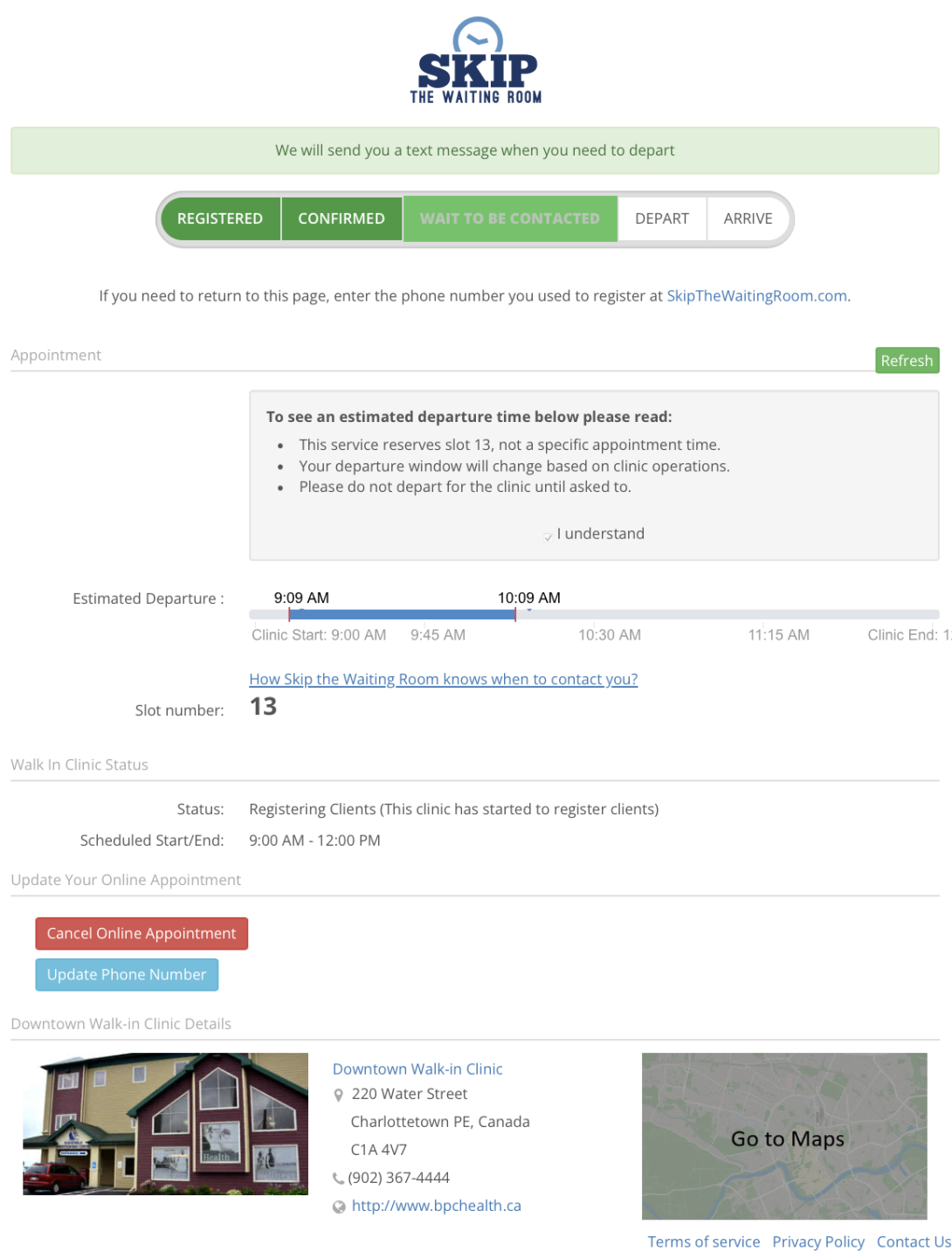
I got the text to leave at 9:38 a.m., I arrived at the clinic at 9:45 a.m., got ushered to an examination room at 10:08 a.m., and saw a doctor about 5 minutes after that.
Diagnosis: my viral infection of yore inspired a bacterial sinus infection. Kindly Dr. Beck prescribed me antibiotics for that (“Amoxicillin/Clavulanic Acid”), I got the prescription filled and (I hope) I’m on the road to recovery.
In his post Fix Three Broken Things, David Cain writes about the “psychic injury” of having broken things in your life:
All broken things, no matter how easily they’re fixed, levy ongoing costs to well-being. They cause psychic injury every time you see or interact with them. The Buddha’s word for human angst or suffering was dukkha, referring to a wagon wheel that turned unevenly around its axle. The wagon still gets you from town to town, but the ride is grinding and bumpy.
Catherine’s art piece had been leaning against a wall in the print shop for more than a year, waiting to be cleaned up and moved. It was a glaring “broken thing” and, indeed, every time I opened the door to the print shop its presence there made my day a little more grinding and bumpy.
Reading Cain’s post was the straw that broke the camel’s back, as it raised the profile of the “psychic injury” relative to the perceived pain of actually fixing the broken thing.
In the end, it took me about two hours from start to finish to prepare the art piece, call the Palliative Care Centre to get permission to drop it off, load it into the car, drive out to the Centre, unload it, and come home. Peanuts, relative to the daily grinding bumpiness.
Cain’s post finishes:
But the moment that thing gets fixed, the relief is surprisingly deep; you were bearing more pain than you knew. And so close to its end the whole time!
Exactly.
Five years ago January I spent every day for two weeks at Catherine’s side in the Provincial Palliative Care Centre. My time there, though filled with anxiety and anguish, also feels like a magical bubble of wrap-around support after a six years of caregiving, and I hold a soft spot in my heart for the centre and its staff and volunteers.
It was Catherine’s wish that the piece that she created with BJ Sandiford, The Spirit of Charlottetown, be donated to the Centre. It took a five year procrastination to get me there, but yesterday I loaded the piece into the car, drove out to the Centre, and dropped it off. It was my first time inside the door since the day Catherine died.
Here’s the piece displayed at Receiver Coffee in 2016:
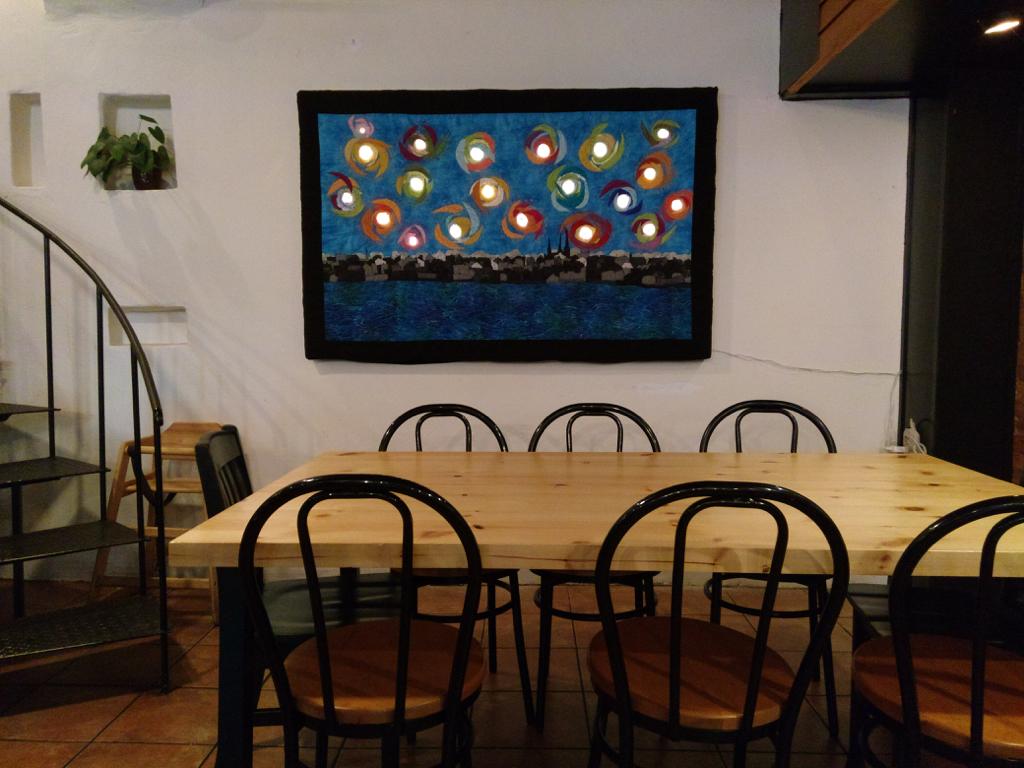
I’m happy that The Spirit of Charlottetown will have a second life: Catherine’s vision for the piece was to represent the care and support she was receiving, from myriad corners, as she lived with cancer. It will continue to do so.
One of the things I learned during the days I spent at the Centre in 2020 was that both of the palliative care physicians of the day, Drs. Lecours and Baker, drove electric vehicles. Despite this, there was no EV charger in the Centre’s parking lot, an absence I felt myself, as we’d purchased a Kia Soul EV just the month before, and having to worry about where and how to charge it was an overhead I didn’t need.
In the months following, I advocated for the installation of an EV charger at the Centre with the provincial government, and received words of encouragement from MLAs James Aylward (then Minister of Health) and Natalie Jameson (MLA for Charlottetown-Hillsborough Park, where the Centre is located). I’m happy to report that, five years later, it appears that this is about to happen: on my visit yesterday I spotted the electrical setup in place:
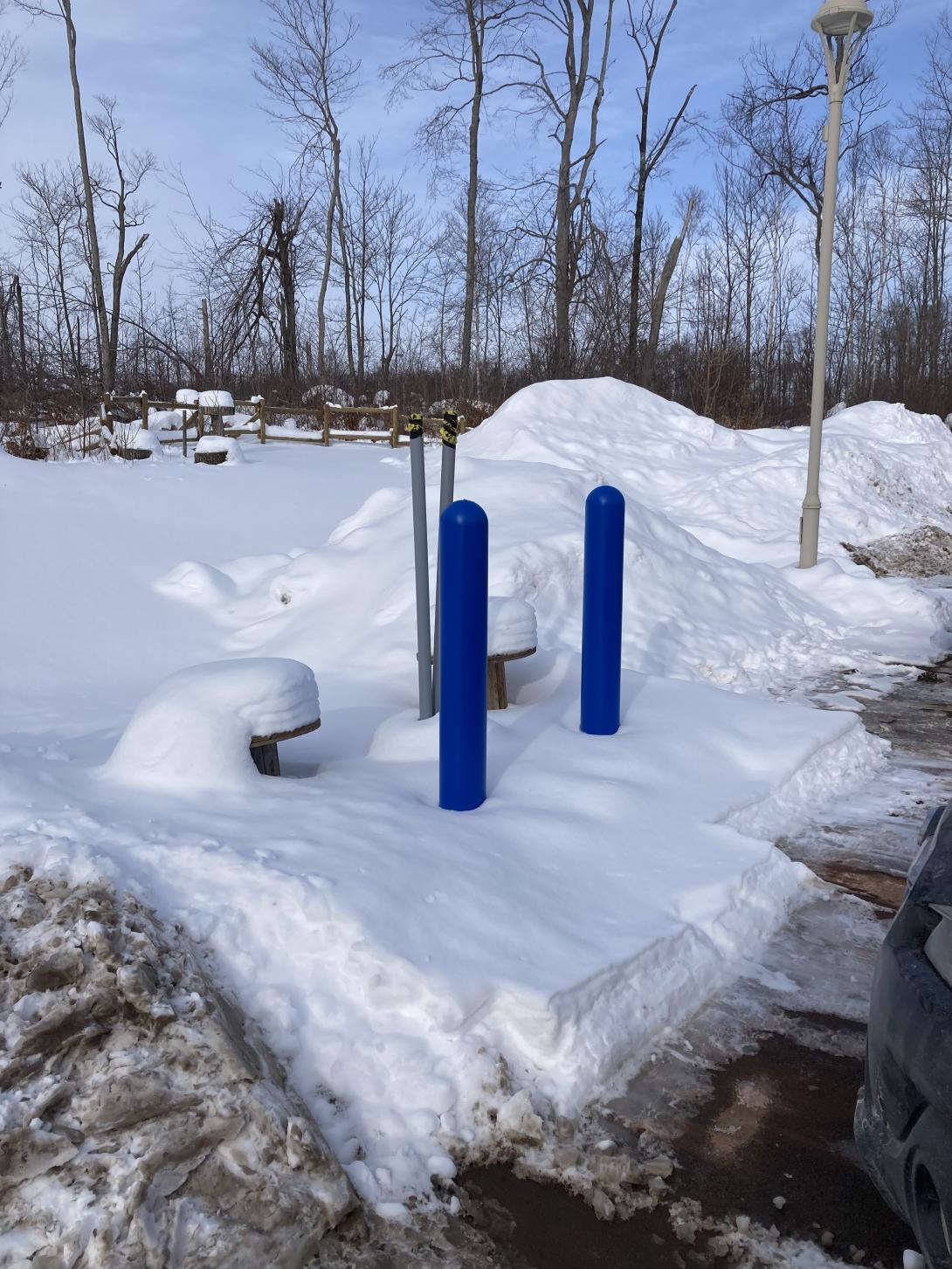
I’ll choose to see this EV charger as a part of Catherine’s legacy as well.
The blog of Nashville’s Parnassus Books (of which Ann Patchett is co-owner) has proved to be a rich vein for book recommendations. The 2024 Gift Guide: Fiction Edition has, in particular, paid off well for me.
I’ve just read two of the books that appear on that list, both secured from the Provincial Library Service.
Sandwich, by Catherine Newman, is described like this on the Parnassus blog:
This is a book I will place in the hands of every 40-something woman trying to balance raising kiddos and aging parents while attempting to have some semblance of intimacy within their marriage. I had no idea I needed to read this book, and I am so grateful I did. Funny and poignant, I will reread this book on the hard days and remind myself it’s okay to laugh (and cry).
I am neither 40-something, nor a woman, but I loved this book nonetheless. It takes place over a week in a beach house on Cape Cod: Rocky and Nick have gathered for the week, as they have for decades, with their (now-adult) children, and are later joined later by Rocky’s own parents.
We have spent many weeks at the shore over the last three summers, with various combinations of family, and I saw a lot in the book that rang familiar. It’s a breezy read, well told, structured around the 7 days of the week, and, spurred on by getting it as an one week “express loan” from the library, a whipped through it in a pleasant two days.
In a similar vein, albeit at much greater length, with many more webs that weave together, Same As It Ever Was: A Novel, by Claire Lombardo, is a multi-generational “sandwich” story about parents Julia and Mark, their adult children, and their own parents.
Here’s what Parnassus writes about the book:
Lombardo is a master of the domestic novel. She is able to depict the complexity of a marriage, the pull women feel on various versions of the self, and what connection to others truly means and feels like in a way that feels honest and raw in the most beautiful way possible. I adored this book and almost couldn’t bear to finish it.
I also adored the book. Since I finished it yesterday—also the result of sprint—I’ve felt strangely like I lived inside the novel, and, being unable to discuss this with Lisa (who’s reading it now) feels like keeping secrets.
Lombardo is a skilled writer, and the structure of the novel, back and forth through time, hinting at, but withholding details, feels like the way that life plays out.
Another book I read this month, found, in this case, not by Parnassus, by by Lisa, who noticed it’s been filmed for release later this year, is The Salt Path by Raynor Winn.
I am a sucker for impossible voyage stories, and I was attracted to the book for that reason, and because it’s a story of a couple roughly my age dealing with loss and illness by heading out to walk the South West Coast Path in the U.K.
I feared that the plodding nature of a long distance walk wouldn’t translate well to the page, and that the book we would a series of “walked some more, had lunch, found a campsite” vignettes. And it is that. But Winn is a colourful writer, and her descriptions of both their interior landscapes and the exterior ones they are trudging through, are lovely. I look forward to seeing how it translates to film.
Here’s the Apple Maps view of the corner of Kent and Great George from the summertime:
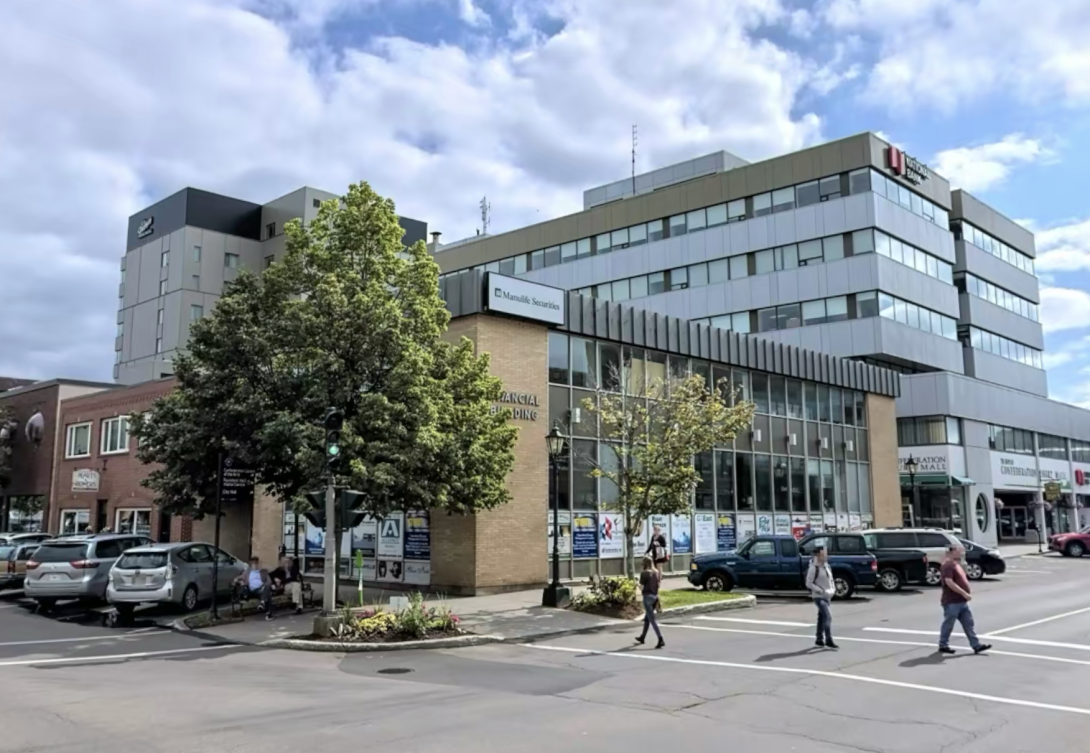
And here’s a photo that Lisa took while walking by the same corner earlier this week:

It’s a remarkable change to the neighbourhood, and one that seemingly happened in the blink of an eye: one day the buildings—the Financial Building and its neighbour, the former home of Hearts & Flowers—were there, and the next day, poof, they were gone.
The Financial Building was a quirky building, a model for how to make a non-accessible building, with stairs everywhere. I spent a lot of time inside it, for one reason or another. I can’t say I’ll miss it exactly, but it was a fixture, and part of the fabric of our neighbourhood, an example of a certain school of architecture that has since passed.
It will soon be replaced by a new 85-unit apartment building, being developing by a Homburg company.
 I am
I am